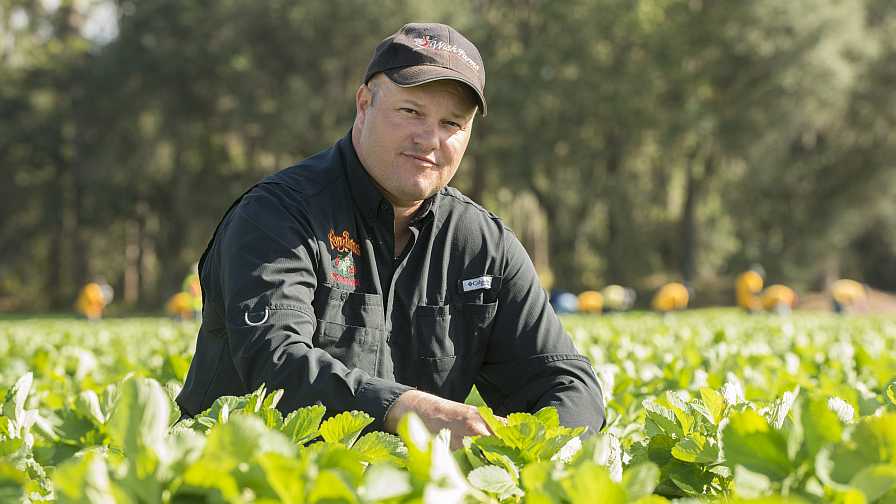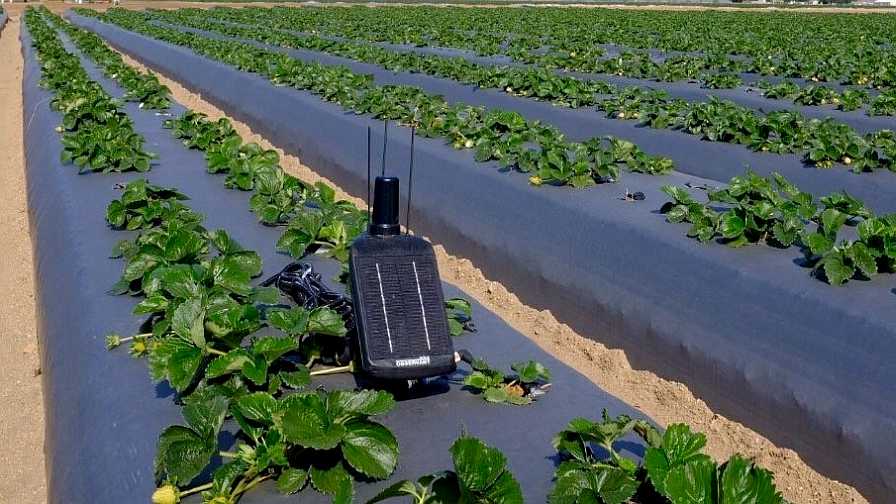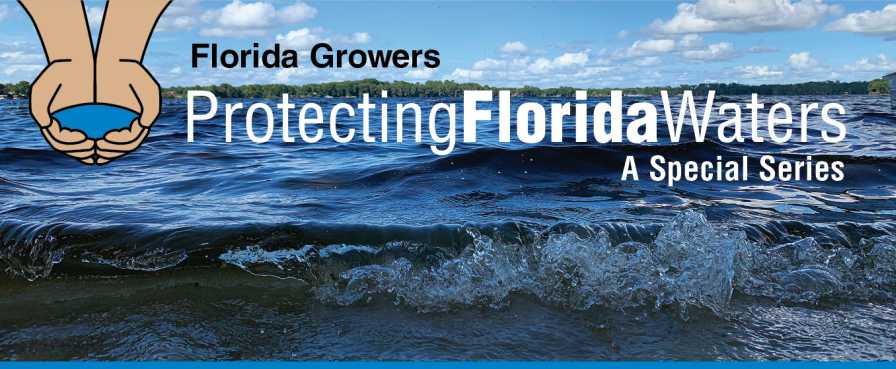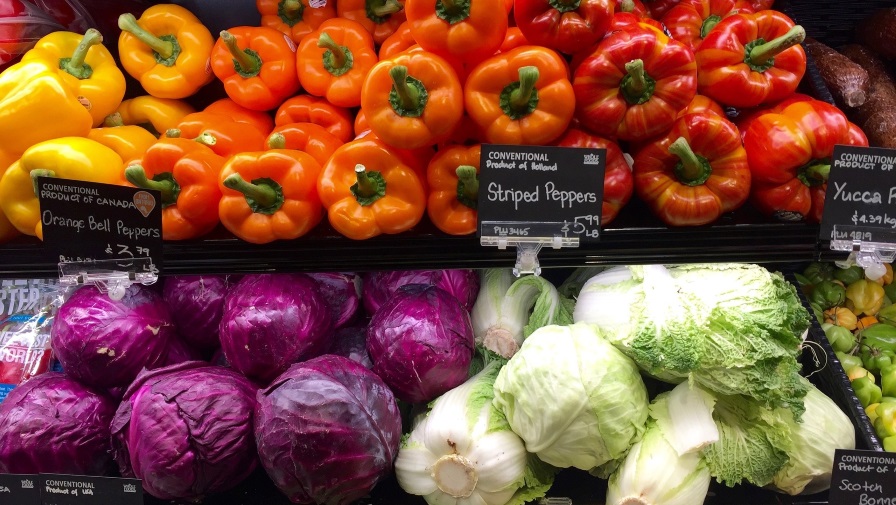Exacting Precision on Strawberry Nutrient Applications

Dustin Grooms uses grid sampling, sap analysis, and soil biology to optimize nutrient applications on Fancy Farms in Plant City, FL.
Photo courtesy of Fancy Farms
The Grooms family has been growing strawberries in Plant City since 1974. Over the years, the farm has adapted to changing times and market conditions to sustain production. Today, Dustin Grooms has taken over management of Fancy Farms from his father Carl. This season, about 125 acres of berries will be planted, along with other spring crops on the same plastic.
Grooms focuses on precise nutrient applications. He says it makes sense from an economic, environmental, and production standpoint. No need to waste money on excess fertilizer that might potentially leach into waterways. In addition, a properly fed strawberry plant is more productive and more resilient against disease. It is this formula that earned Grooms recognition as a National 4R Advocated Award winner in 2019.
The 4R program encourages growers to focus on using the right source of fertilizer applied at the right rate, right time, and in the right place.
Right Place, Right Rate
The foundation of Grooms’ fertilizer program is grid sampling to see what nutrients are lacking in various areas of Fancy Farms’ fields. He works with Jerrod Parker from Chemical Dynamics to develop the fertilizer program.
“We are putting the nutrients where they need to be based off the grid sampling rather than slinging a bunch of fertilizer across fields that could get blown away or rained down to the creek,” Grooms says. “We lightly incorporate the fertilizer into the ground to make sure it stays put. We typically shoot for UF/IFAS recommendations, following the state’s BMP [best management practices] program.”
Last season, Grooms took fine-tuning the nutrient program to the next level by using sap analysis to determine in-season nutrient needs. He describes the process as akin to blood work, but for plants. The sap is extracted from young and old leaves. From there, the samples are shipped to Holland for analysis, which are sent back to the farm via email four days later. Nova Crop Control provides the service.
“It is like drawing blood and tells us exactly what the plants need even better than traditional tissue sampling,” Grooms says. “It is pretty cutting-edge technology, and we are still learning how we can use it to really fine-tune the rates and timing of nutrients we are applying. But it has big potential to save us money on fertilizer while optimizing plant health.”
Farming Below the Ground
Grooms is a big believer in promoting biological diversity in the soil. He does this in several ways, including planting cover crops in the summer between crops. He plants a mix of sun hemp, sunflower, sorghum, buckwheat, mustard, aeschynomene, crimson clover, and cow peas. Sun hemp is planted alone in some blocks. He also applies microbes, humic acids, and biochar to the soil.
“We are farming just as much below the plastic as we are above the plastic to really get the soil biology firing to hold nutrients in the root zone,” he says. “All of this is adding to a more balanced nutrition program and a healthier plant, which has reduced our need for fungicides to some degree.”

The data from Jain USA irrigation soil moisture monitors have resulted in major water savings on the farm.
Photo courtesy of Jain USA
Water Savings
In addition to conventional tensiometers, Grooms has added Jain soil moisture monitors to help him make more informed decisions on irrigation. He worked with Florida Department of Agriculture and Consumer Services on a cost-share for the sensors.
“We are saving a boatload of water with these monitors,” he says. “Early in the season, we were running irrigation for an hour and a half, and with the monitors, we’ve rolled that back to an hour. It is almost like you are cheating because you can see exactly where the water is in the beds. And it measures salinity, so we have an idea where the fertilizer is, too. We can keep that water and fertilizer right in the root zone with this information. It is invaluable data.”
The farm also has tailwater recovery ponds on about a third of its fields to recycle irrigation and rainwater.
 This is the third in a series of articles featuring growers who are taking a proactive approach to protecting the water resources on and around their farms. The stories will investigate how production practices, equipment, and technology are helping growers in the Sunshine State do more to protect water. Come back next month for another installment.
This is the third in a series of articles featuring growers who are taking a proactive approach to protecting the water resources on and around their farms. The stories will investigate how production practices, equipment, and technology are helping growers in the Sunshine State do more to protect water. Come back next month for another installment.









